
Maintenance
Although ProWood pressure-treated lumber is protected
against rot (fungal decay) and termites, periodic maintenance
must be performed to maximize protection against weathering.
This maintenance will let you enjoy your new outdoor project for
many years.
In some cases ProWood treated lumber has water repellent
already applied during the pressure treating process. Make
sure to read and understand the end tag on your new lumber
to determine whether a factory-applied water repellent has
been added. The information on the treated lumber tag or end
tag will help you understand when to apply a topical wood
sealer.
Apply Stain or Sealer to Dry Wood
The time it takes for wood to dry out depends on the climate
and the wood’s exposure to the sun. During the summer
pressure-treated lumber under full sun can dry in a few days.
In cool, damp whether or when shaded by an overhanging
roof or tree, it will take much longer for wood to dry.
Use the water test to see if it’s time to seal (or re-seal).
Drizzle some water onto the wood. If the water beads, the
wood is still sealed and protected. If the water is absorbed
into the wood within a few seconds, it’s time to apply a
sealer. Test a few different areas of a deck, fence or wood
project. Note: High-traffic spots on a wood deck are likely to
wear down before corners and railing balusters.
Seal Kiln Dried Lumber
In some areas you can buy treated wood that is Kiln Dried After Treatment (KDAT). With KDAT lumber, moisture is
removed from the wood before shipment to a lumberyard. KDAT will be marked on each piece of wood with an end
tag or an ink stamp. It is recommended that you seal KDAT lumber immediately unless it has been pressure-treated
with a water repellent additive.
Add Color and Water Repellency with a Wood Sealer
Start by applying a topical sealant to your new project for surface protection. We do not recommend using a
conventional multi-coat paint system or varnish. The performance is nearly always disappointing and scraping and
sanding and often must precede repainting. Instead, choose an outdoor wood sealer. A wood sealer offers a degree
of water repellency and color to treated lumber without forming a thick coating on the surface. It will also allow any
remaining moisture to slowly leave wood after the coating has been applied. Wood sealers come in three versions:
solid stains, semi-transparent and clear.
Staining and Sealing
Treated Lumber

Solid Stains
It is recommended that “solid” wood sealers, which have more pigment, be used only on vertical projects such as
fences and siding. If used on decking, weather and foot traffic will wear through the pigment unevenly.
Semi-transparent Sealants
This type of wood sealant is suitable for vertical or horizontal surfaces such as deck boards, rails, siding and playground
equipment. There are several brands available in many colors.
Clear Sealants
This type of sealant has no pigment or color. It still offers some
protection from the weather, although wood fading will occur more
rapidly than color with sealants. Eventually, the wood will fade to
gray, which may or may not be the look you desire.
NOTE: We recommend using wood sealers that contain an ultra-
violet stabilizer. The stabilizer will not prevent eventual discoloration
to a weathered gray appearance, but it will slow the process down.
Whatever sealant you choose, follow the manufacturer’s instructions
carefully.
Periodic Maintenance
Apply cleaner/brightener every one to three years, depending on the
appearance of the outdoor project, followed by a coat of sealer to
rejuvenate the color of the wood.
If you decide to wait more than three years to perform your next
cleaning, you may want to use a power washer as your first step in the
cleaning process.
Restoring Gray, Weathered Wood
To restore gray, weathered wood, use a power washer, then clean
with a cleaner/brightener to help bring the wood back to its natural
appearance. This prepares the wood for better penetration of a
wood sealer. Work the brightener in with a stiff bristle brush, followed
by a thorough rinsing with water.
After the wood is completely dry, apply a wood sealer. If the sealer you use is colored, be sure to use a comparable
color or darker color than your original wood project.
The diagrams and instructions in this brochure are for illustrative purposes only, and are not meant to replace a licensed professional. Any construction or use of the product must
be in accordance with all local zoning and/or building codes. The consumer assumes all risks and liability associated with the construction or use of this product. The consumer or
contractor should take all necessary steps to ensure the safety of everyone involved in the project, including, but not limited to, wearing the appropriate safety equipment. Universal
Forest Products, Inc., makes no warranty, either express or implied, and shall not be liable for any damages, including consequential damages.
Add color to all your pressure
treated projects:
• Decks
• Fencing
• Porch and patio covers
• Trellis
• Window screening
• Picnic tables
• Gazebos
• Mobile home skirting
• Lattice
• Flower bed edging
• Storage areas
2801 East Beltline NE • Grand Rapids, MI 49525 • 1.800.598.9663 • ProWoodLumber.com
ProWood and the tree logo are registered trademarks of Universal Forest Products. Inc, in the U.S., Canada and Mexico. ©2012 Universal Forest Products. All rights reserved. 7157-7/13
Staining and Sealing Treated Lumber
-
 1
1
-
 2
2
Ask a question and I''ll find the answer in the document
Finding information in a document is now easier with AI
Related papers
-
Unbranded 73000446 User manual
-
Unbranded 102577 User manual
-
 Mendocino Forest Products 01266 Installation guide
Mendocino Forest Products 01266 Installation guide
-
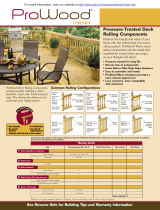 WeatherShield 108007 Installation guide
WeatherShield 108007 Installation guide
-
Unbranded C84202D Operating instructions
-
Unbranded 1812WPS Installation guide
-
Unbranded 549000102040800 Installation guide
-
Outdoor Select 559000102081200 Installation guide
-
Unbranded EFWFW3030 Operating instructions
-
 Plytanium 198557 Installation guide
Plytanium 198557 Installation guide
Other documents
-
ProWood 446320 User guide
-
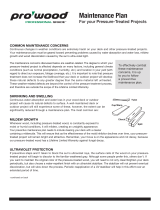 Severe Weather 127738 User manual
Severe Weather 127738 User manual
-
MGP TPF-48 Installation guide
-
Ready Seal 545 User manual
-
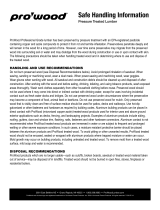 WeatherShield 186709 Installation guide
WeatherShield 186709 Installation guide
-
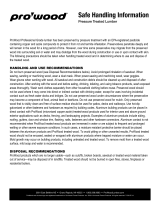 WeatherShield 253931 Operating instructions
WeatherShield 253931 Operating instructions
-
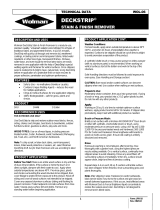 Wolman 14446 User guide
Wolman 14446 User guide
-
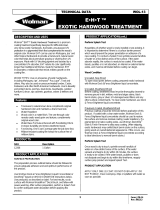 Wolman 12206 User manual
Wolman 12206 User manual
-
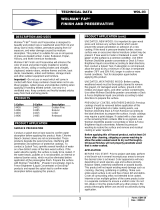 Wolman 14416 User manual
Wolman 14416 User manual
-
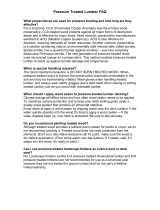 WeatherShield 248173 Installation guide
WeatherShield 248173 Installation guide











